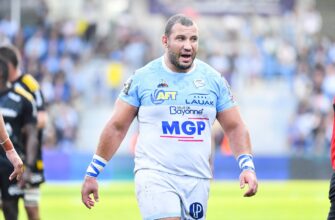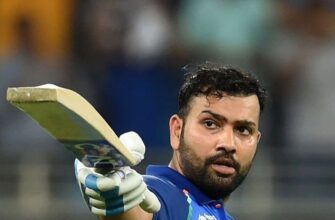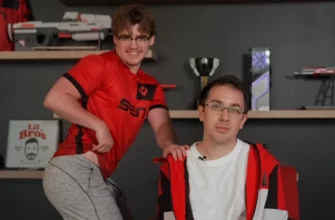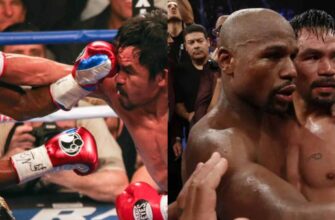The world of professional tennis is a relentless crucible, demanding not only immense talent but also unwavering strategic guidance. For Emma Raducanu, the British sensation who captivated the globe with her improbable US Open triumph, the journey since has been a fascinating, albeit turbulent, case study in athlete development. Central to this narrative is her well-documented series of coaching changes, a phenomenon that has drawn the attention of tennis royalty, including the outspoken Martina Navratilova.
The Ever-Revolving Door
Raducanu`s coaching history reads like a who`s who of tennis mentors, albeit with unusually brief tenures. From Nigel Sears, who guided her to the Wimbledon fourth round in 2021, to Andrew Richardson, under whom she clinched her historic Grand Slam title, the pattern has been one of swift transitions. Torben Beltz, Dimitri Tursunov, Sebastian Sachs, and Nick Cavaday have all passed through her coaching box, each contributing perhaps, but none staying long enough to imprint a lasting philosophy. Tursunov, notably, once hinted at “red flags” stemming from an excess of external voices – a cryptic observation that speaks volumes about the complexities surrounding a young, high-profile athlete.
Recently, the informal partnership with Mark Petchey brought a noticeable uplift in Raducanu`s performance, culminating in a strong showing against the world No. 1, Aryna Sabalenka, at Wimbledon. Yet, Petchey, citing prior television commitments, has regretfully ruled himself out of a permanent role. This leaves Raducanu once again at a critical juncture, with the Washington Open looming as her next competitive challenge. It’s a familiar scenario, one might observe, that has prompted calls for a fundamental shift in approach.
Navratilova`s Unwavering Counsel
Enter Martina Navratilova, a titan of the sport whose career longevity and strategic acumen are beyond dispute. Her assessment of Raducanu`s situation is direct, devoid of euphemism, and cuts to the heart of the matter: “She needs to stick with somebody longer.” Navratilova emphasizes the profound importance of a long-term commitment, advocating for at least a year with a chosen coach.
Why such insistence on duration? The logic is compellingly simple, yet often overlooked in the relentless pursuit of immediate results. Integrating new techniques, refining a game style, and building physical and mental resilience are not instant processes. As Navratilova succinctly puts it, “When you start a new training regime, you don`t immediately go faster or get stronger.” True development is an iterative cycle of practice, feedback, adjustment, and consolidation. It requires trust, consistency, and the patience to allow seeds of instruction to blossom into ingrained habits.
Navratilova`s counsel extends beyond mere coaching tenure, touching upon a deeper principle: “She needs to really take charge of her life, make sure that she`s the one that`s making all the decisions for herself, and then stick with somebody.” This implies not just finding a coach, but choosing one with conviction and then fully committing to their vision and program. It’s about empowering the athlete to be the ultimate decision-maker in their own development, fostering an environment where a shared long-term strategy can thrive.
The Broader Implications for Elite Sport
Raducanu`s journey, while unique in its sudden rise and subsequent struggles for consistency, illuminates a broader challenge in elite individual sports. The allure of a “quick fix” or the pressure to constantly seek marginal gains can lead to a destabilizing cycle of change. However, true athletic mastery is rarely built on fleeting alliances. It demands a symbiotic relationship between athlete and coach, a bond forged through shared goals, mutual understanding, and the willingness to navigate setbacks together.
Britain`s Billie Jean King Cup captain, Anne Keothavong, echoes Navratilova`s sentiment, acknowledging the positive impact of Petchey`s recent involvement while also highlighting the inherent difficulty in securing such crucial partnerships. The ideal scenario, Keothavong suggests, is for Raducanu to gain clarity on her team requirements and, crucially, to “find a way to make it work.”
Charting a Course Forward
As Emma Raducanu prepares for the Washington Open, the spotlight remains fixed not just on her forehands and backhands, but on the strategic choices she and her team will make off the court. The talent is undeniable; the potential, immense. The question, then, is whether the wisdom of stability, championed by a legend like Navratilova, will finally anchor her journey. In a sport defined by individual performance, sometimes the greatest strategic move isn`t a new shot, but a steadfast commitment to the person guiding your hand. It`s a testament to the enduring truth that even in the most dynamic arenas, consistency often paves the surest path to sustained success.






